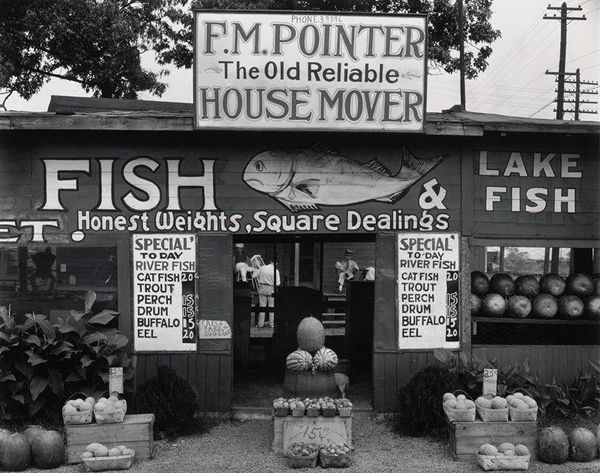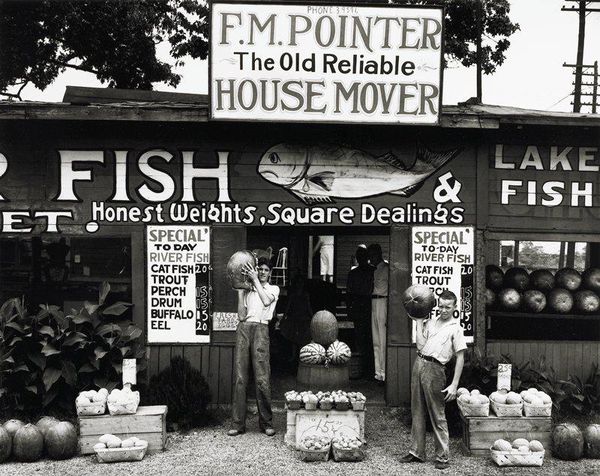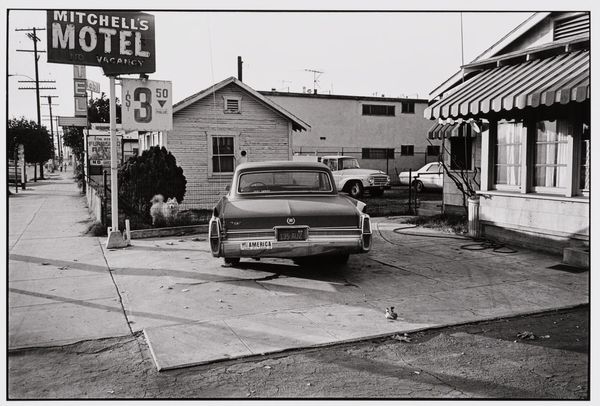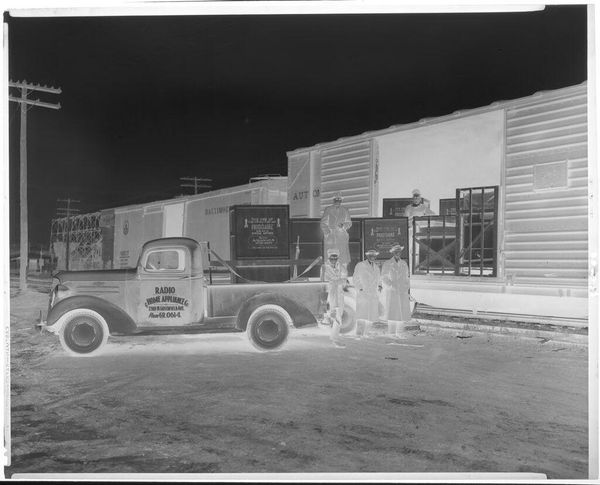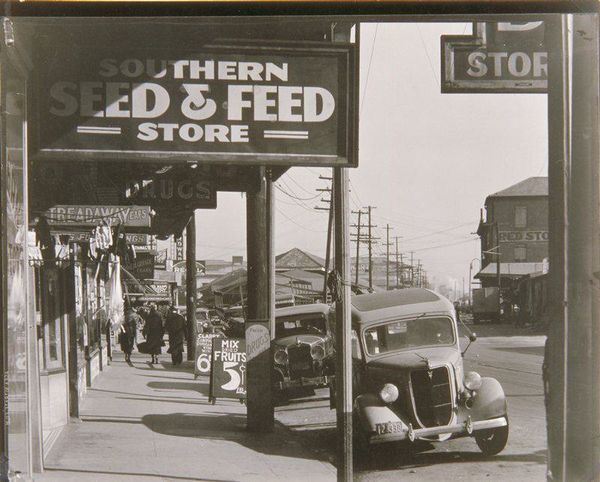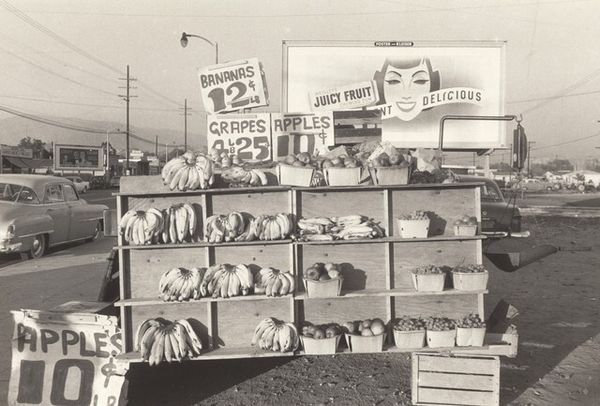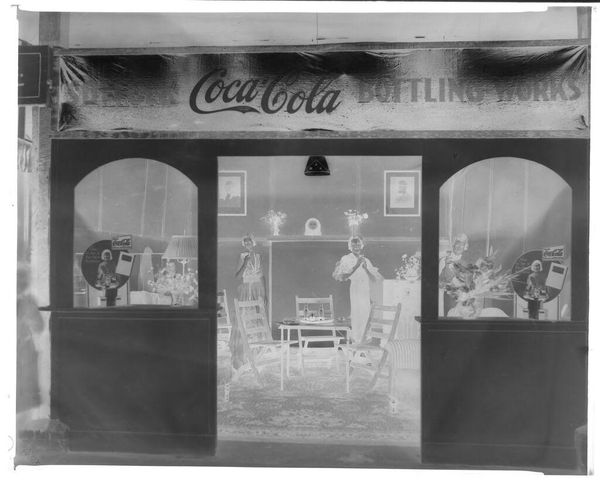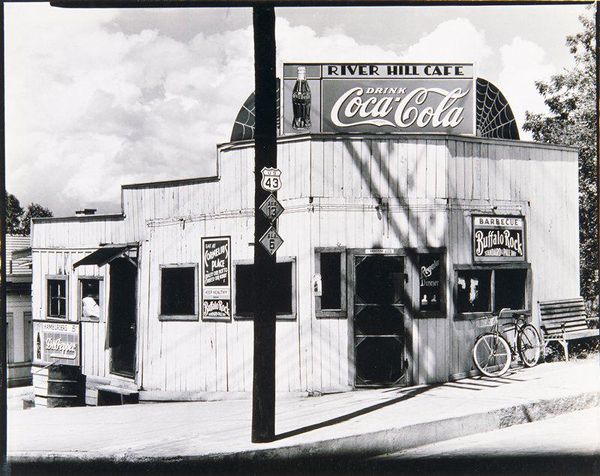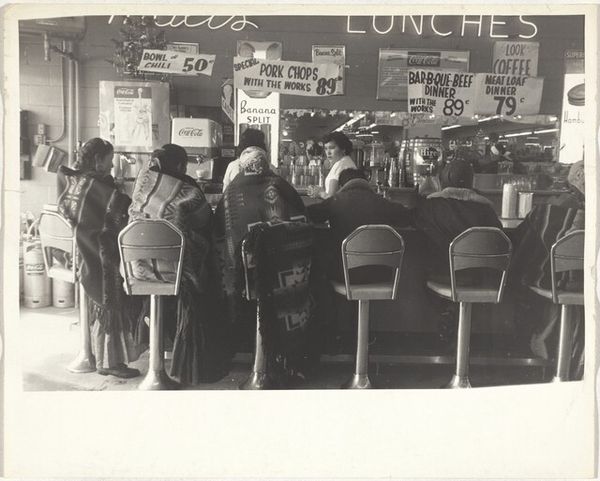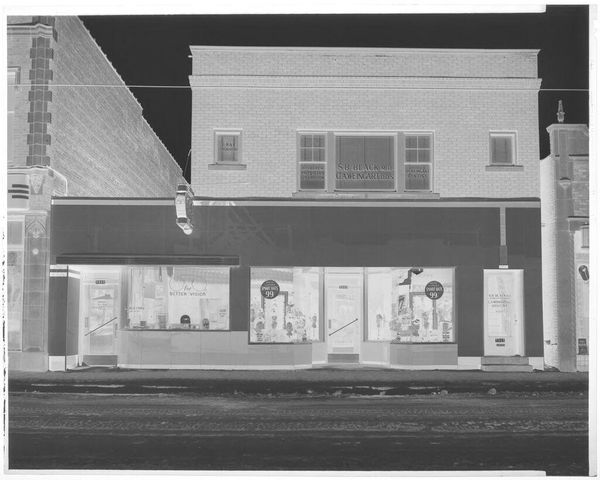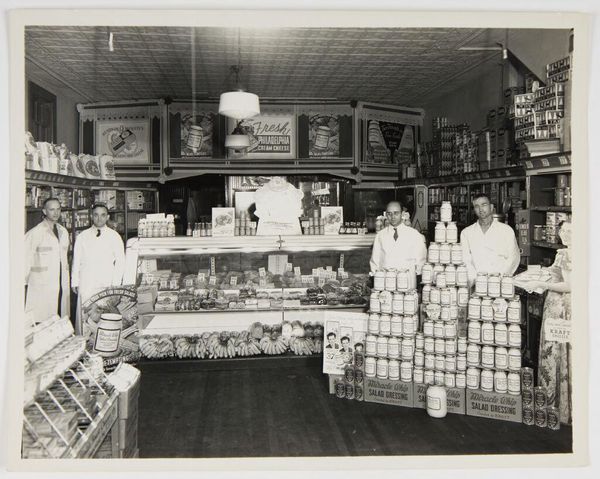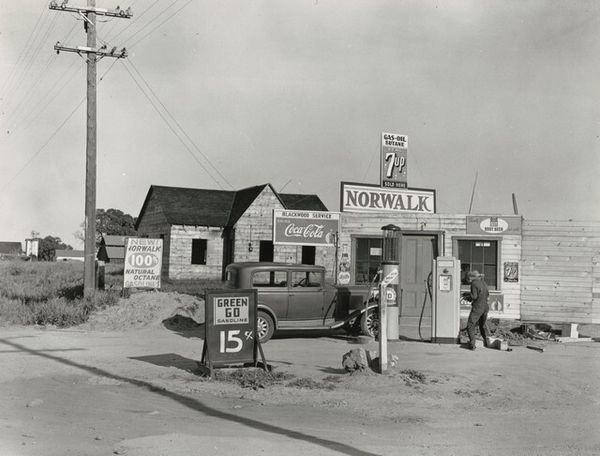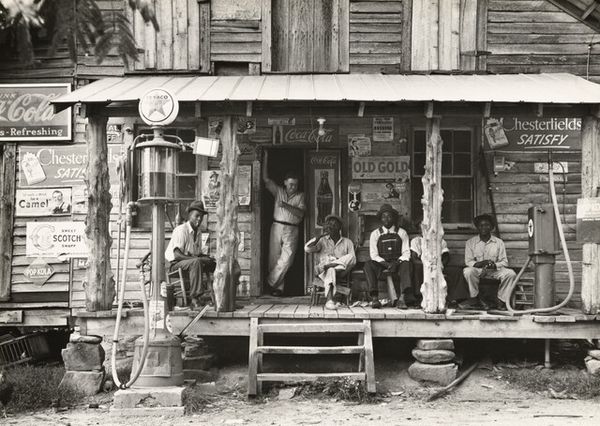
gelatin-silver-print, photography, gelatin-silver-print
#
gelatin-silver-print
#
black and white photography
#
landscape
#
rural
#
street-photography
#
photography
#
black and white
#
gelatin-silver-print
#
monochrome photography
#
united-states
#
realism
Dimensions: 7 5/8 x 9 9/16 in. (19.37 x 24.29 cm) (image)8 x 9 15/16 in. (20.32 x 25.24 cm) (sheet)14 1/4 x 18 1/4 x 15/16 in. (36.2 x 46.36 x 2.38 cm) (outer frame)
Copyright: No Copyright - United States
Curator: Walker Evans’ "Roadside Stand," a gelatin silver print from 1936 held at the Minneapolis Institute of Art, presents a fascinating slice of Americana. Editor: My initial reaction is of balanced contrasts—light and shadow, textures both rough and smooth, all anchored by the starkness of the black and white medium. The layering of signage and produce creates a visually dense space. Curator: Note how Evans orchestrates depth through planes. The façade itself functions as a literal plane, divided horizontally by competing signage – “The Old Reliable House Mover” above, the declaration of “Honest Weights, Square Dealings” below. Editor: That's right, above the humble produce are emblems of home and trust, deeply resonant symbols in Depression-era America. There's an intentional layering here: watermelons piled in the foreground—fertility and abundance—framed by the stark price lists announcing available river fish. The painted fish looming overhead also, almost an apex predator. Curator: I agree. The careful articulation of surface—the rough-hewn wood siding, the meticulously hand-painted signs— speaks volumes about the cultural and economic landscape. He is offering an astute organization of details, so this subject turns into a window to analyze form in both material and presentation. Editor: The typography itself warrants consideration, too— the variety of fonts competing for attention speak to both the economic imperative and the localized visual vernacular. Notice that there are children holding produce standing in front of the facade. Curator: Yes, two children occupy a transitional space—part display, part figures—and provide a compelling structural counterpoint. In some way, this speaks to their engagement with labor at the intersection of consumerism and commodity. Editor: Indeed, the overall symbolic weight rests on this juxtaposition of innocence and enterprise, playing into our cultural understanding of value and survival, especially within the context of its creation, the Great Depression. Evans has a precise awareness of this social environment and how to extract an intense amount of data in one capture. Curator: His manipulation of contrast and visual density certainly forces us to unpack these cultural emblems, questioning their inherent values and perceived realities. Editor: Ultimately, this seemingly simple roadside view serves as a poignant reminder of the interwoven symbols and shared cultural narratives that underpin our history.
Comments
Join the conversation
Join millions of artists and users on Artera today and experience the ultimate creative platform.
